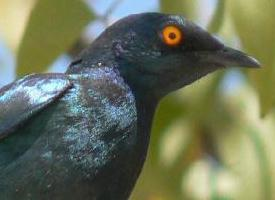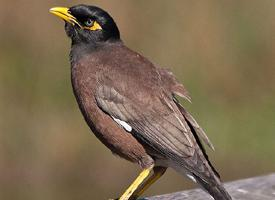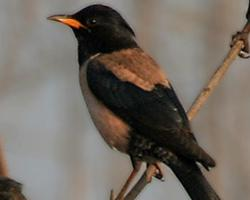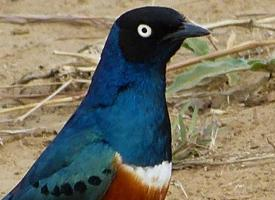
Súlyok és méretek
| Hossz | 25 cm |
|---|
Állatleírás
The Cape Starling, scientifically known as Lamprotornis nitens, is a captivating bird species renowned for its iridescent plumage and gregarious nature. This bird is a member of the starling family, Sturnidae, and is predominantly found in the southern regions of Africa. Its habitat spans across open woodlands, savannas, and even human-altered environments, showcasing its adaptability. The Cape Starling is a medium-sized bird, measuring approximately 25 to 30 centimeters in length, and it displays a remarkable spectrum of colors that shimmer in the sunlight, making it a sight to behold.The plumage of the Cape Starling is primarily a glossy metallic blue-green, with the intensity of the coloration varying with the angle of light, giving it a dynamic and vibrant appearance. The wings and tail are a slightly darker shade, adding contrast to its overall look. The bird's eyes are a striking yellow or orange, set against a black facial mask, which enhances its striking appearance. The beak and legs are black, providing a subtle balance to its luminous body.
Cape Starlings are known for their social behavior, often seen in groups that can range from small family units to large flocks. These gatherings are not only a defensive strategy against predators but also an efficient way to forage for food. Their diet is omnivorous, consisting of a wide variety of insects, fruits, and occasionally, small vertebrates. This varied diet plays a crucial role in the ecosystem, as Cape Starlings help in controlling insect populations and in the dispersal of seeds, contributing to the health of their habitat.
Breeding season for the Cape Starling brings about even more of their social nature. They are monogamous birds that nest in cavities, which can be naturally occurring or previously used by other birds. The female typically lays between 3 to 5 eggs, which are incubated for a period of about 13 to 14 days. Both parents are involved in the rearing of the chicks, from feeding to teaching them to fly, showcasing a strong familial bond.
The Cape Starling's vocalizations are a mix of melodious calls and complex songs, which can include imitations of other bird species and even human-made sounds. These vocal skills enhance their social interactions and play a vital role during the breeding season as males serenade females with their intricate songs.
Despite facing threats from habitat loss and degradation, the Cape Starling has shown remarkable resilience, partly due to its ability to thrive in altered landscapes. However, conservation efforts are crucial to ensure the sustainability of their populations and the preservation of their natural habitats.
In conclusion, the Cape Starling, with its dazzling plumage, intriguing social behavior, and ecological importance, is a fascinating species. Its presence in the African skies adds a touch of splendor to the landscape, making it a cherished part of the continent's rich biodiversity.
Hasonló állatok
Új állatfotók
Top 10 állat
- Dolphin gull (Leucophaeus scoresbii)
- Diana monkey (Cercopithecus diana)
- Moustached guenon (Cercopithecus cephus)
- Galápagos tortoise (Geochelone nigra complex)
- Japanese macaque (Macaca fuscata)
- Stone loach (Barbatula barbatula)
- Russian tortoise (Testudo horsfieldii)
- Greek tortoise (Testudo graeca)
- Common flying dragon (Draco volans)
- Vendace (Coregonus albula)


